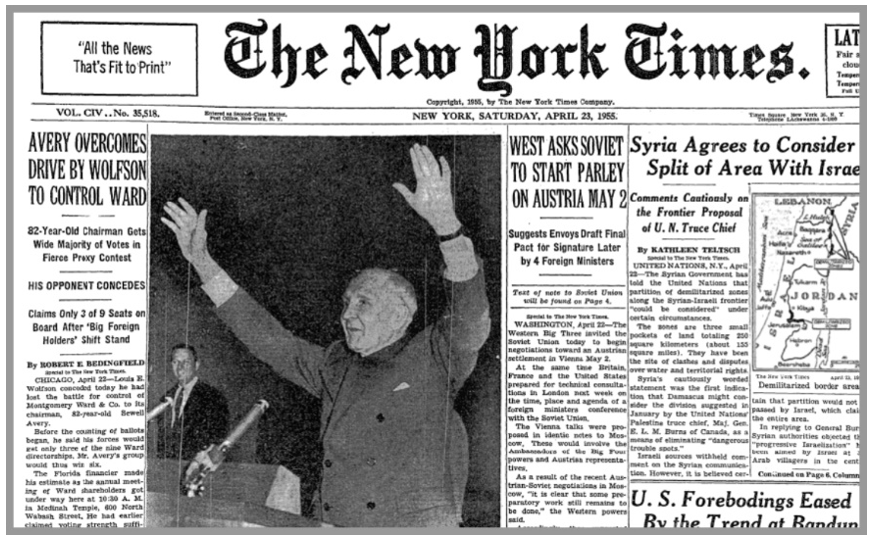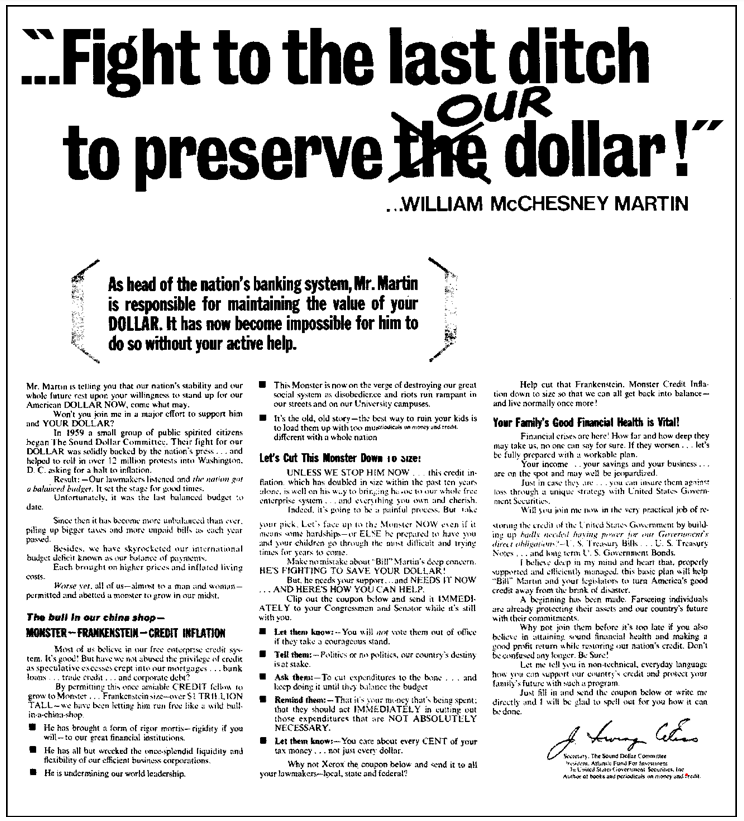 |
| By Martin Weiss |
Weiss Ratings recently celebrated five decades in business.
But the historic events that shaped my company's destiny actually began nine decades ago.
The Crash of 1929
The story begins in early 1929, when my father, Irving Weiss, first went to work on Wall Street as a "customer's man," nowadays called a stockbroker.
He joined a boutique brokerage firm and began advising a small group of friends and family who, like him, had modest means and were struggling to get ahead.
The market was booming.
Investors were tripping over each other to buy every stock they could lay their hands on.
Even shoeshine boys near the steps of the New York Stock Exchange made extra money by giving out hot tips that made their customers rich.
But Dad was skeptical. He saw a big disconnect between the euphoria on Wall Street and the despair in the rest of America that he knew — the farms, in depression; Florida real estate, busted; his own neighborhood in Harlem, mostly trapped in poverty.
So, he told his clients to stay away from the stock market … or to get the heck out.
The veteran brokers in his office, standing by the ticker tape machine, laughed at him.
"Weiss is just a kid," they said. "What does he know about the market? And why is he trying so hard to hurt our business?"
Then came Black Monday, Oct. 28, 1929. The Dow crashed 13.5%. And on the very next day, Black Tuesday, it tumbled another 11.7%.
In today's market, that would be like the Dow crashing 8,600 points in just 48 hours.
Soon, word spread that Irving was "the only one who saw it coming." When he walked by, clients and staff pointed, smiled and even cheered.
He didn't pay much attention to the accolades. Instead, he resolved that, beyond just helping rich investors richer, his mission would always be to help protect average people — rich or poor — from the dangers, scams and market manipulators that often lurked in the dark shadows of the financial world.
This is the origin of one of our core values: We are advocates for average investors and savers.
The First Weiss Stock Ratings
Soon after the crash, Dad realized that nearly all Wall Street brokers and bankers — plus most of the so-called "experts" they employed — were biased.
To tell their clients the market was going down was "bad for business," or so they thought.
The conflicts of interest were egregious.
Their "analysis" was distorted.
And that bias itself was a grave danger not only to investors, but also for the market as a whole.
So, even as his newfound fame brought him a bigger book of clients, Dad decided to quit the brokerage business and become an independent stock analyst.
He spent days and nights at the New York Public Library poring over the quarterly and annual reports of America's largest companies.
He compiled data from their financial statements into the large, green spreadsheets that accountants used.
And he created a series of formulas which he aggregated into "grades."
No bias. No conflicts of interest. He called it like he saw it — the good, the bad and the ugly.
That was 1930, more than 40 years before the birth of my company. But today, I think it's fair to say his grading system was "version zero" of the stock ratings system we use today. (To see our latest stock ratings, go here.)
By April of that year, the stock market had enjoyed a big rally. The bulls were raging again. Big brokers had convinced investors that the "bear market was over." And Irving's former clients besieged him with inquiries about which stocks to buy.
His response: "This isn't a new chance to buy. It's your last chance to sell."
For his own account, he used his formulas to select the most overvalued stocks in America. Then he borrowed $500 from his mother (my grandmother) and sold them short to profit from the next big crash.
Sure enough, the market decline that followed made the Crash of '29 look tame by comparison. From top to bottom, the average stock lost about 90% of its value.
Later, in 1931, near the bottom of the market, Dad did the reverse: He used his stock grades to select the strongest, most undervalued stocks to buy.
They included AT&T (T), General Motors (GM), RCA and others.
Compared to their peak prices in 1929, he bought them for pennies on the dollar, near their lowest levels of the 20th century.
The lesson learned: Buy value. And buy it at the right time.
Businessman's Committee for Seasoned Management
While continuing to advise Kennedy and Baruch, Dad was also the lead adviser to another big client of the firm, Sewell Avery, president of Montgomery Ward, one of America's great retail giants.
So, you can imagine my father's shock when he discovered that a former Florida junk dealer by the name of Louis E. Wolfson was mounting a shareholder campaign to kick out Avery and take over as president.
In response, Dad created the Businessman's Committee for Seasoned Management.
He rallied businessmen from around the nation. He launched a major mail and PR campaign, urging shareholders to vote for Avery and keep him on as president. A full-page ad in the Wall Street Journal kicked off the campaign. And it spread from there.
On April 22, 1955, Montgomery Ward shareholders met at a raucous meeting in Chicago, easily the most important corporate takeover fight of mid-century America, and Avery was re-elected.

That memorable turn of events prompted Dad to start his own investment research firm and set up shop next door to the New York Stock Exchange.
More importantly, it inspired our family to lead another public campaign — this time to help defend the president of the country.
The Sound Dollar Committee
Four years went by, and a new battle loomed. Now, I was old enough to be Dad's sidekick — and to know enough to be trouble.
Dad talked frequently about the federal budget deficit. It was beginning to grow out of control. If left unchecked, he feared, it could ultimately cause the most devastating inflation of the 20th century.
President Dwight D. Eisenhower also saw the dangers. So, on Jan. 9, 1959, as Dad and I watched Eisenhower's State of the Union address on TV, we were delighted to see the president propose to Congress the one thing that could help prevent the future inflation: A balanced budget.
"Wow!" I exclaimed. "This is big news!"
We lived on the 20th floor of an East 16th Street apartment in New York City. So, the next morning, Dad and I ran downstairs to the nearest newsstand to check the papers.
We were looking for a big headline like "IKE PROPOSES BALANCED BUDGET." But there was none.
The story was buried on the inside pages. What's worse, The New York Times reported that the most conspicuous reaction to Eisenhower's speech was an unrestrained yawn by the Senate Democratic leader, Lyndon B. Johnson.
Clearly, the Democrats didn't care about the deficit. Nor did the Republicans, for that matter.
But we did.
To help Eisenhower balance the budget and to help the country prevent inflation, we formed a new committee, the Sound Dollar Committee.

Dad enlisted the support of Bernard Baruch and former President Harry Truman.
The head of nation's leading accounting firm, Arthur Andersen LLP, joined the cause.
Fed Chairman William McChesney Martin also gave us his blessing.
We solicited a few donations and used the money to place a full-page ad in The Wall Street Journal, quoting the Fed chairman in the main headline, "Fight to the last ditch to preserve our dollar."
Dad signed the ad, and we waited to see what might happen.
As it turned out, it merely set off the first sparks.
Robert T. McCormick, publisher of the Chicago Tribune, reached out to us, asking if it would be OK to run a similar campaign of their own at their own expense.
We had no objection, of course.
The Los Angeles Times, the New York Daily News and Reader's Digest did something similar.
Soon, scores of newspapers and magazines joined the Sound Dollar Committee in a nationwide campaign to mail protests to U.S. senators and representatives, state legislators and governors — to balance the budget, fight inflation, protect the dollar.
Congressmen would walk into their offices on a Monday morning, be struck immediately with the clutter of mailbags and ask their staffers:
"What's all this? Where did all this mail come from?"
"They're protests, sir."
"Protests against what?"
"Protests against inflation. Coupons protesting inflation cut out from the newspapers, sir. It looks like all the newspapers are running big ads against inflation."
It was an avalanche! According to a Chicago Tribune sample survey on the Hill, the total response was 12 million postcards, coupons, letters, telegrams and phone calls.
New York Gov. Nelson Rockefeller, who was seeking a large budget involving heavy tax increases, became a major target for related protests.
According to The New York Times …
"Since the Governor submitted his record-breaking $2 billion budget with its $227 million in tax increases two weeks ago, a blizzard of correspondence has whitewashed legislators' desks. Some of it has piled up in unanswered bundles on office floors. The mail heavily opposes the Governor's program, more than 100-to-1.
"Conservative estimates place the number of tax letters so far at more than 100,000. And while there are some of the crackpot scrawls that lawmakers largely ignore, most of the tax letters are carefully and intelligently expressed."
Sen. William Proxmire, who had been opposed to the balanced budget, changed his mind, voted in favor and became an aggressive critic of wasteful government spending. One after another, senators followed his lead. And the budget was balanced.
Lesson learned: We won the battle. But we lost the war.
The federal budget of 1960 was the last balanced budget in U.S. history without smoke and mirrors.
John F. Kennedy was inaugurated on Jan. 20, 1961, and the red ink began to flow again.
But it was mostly after his tragic assassination that the deficit really began to balloon out of control: His successor, Lyndon B. Johnson — who, years earlier, had yawned at Eisenhower's balanced budget proposal — unleashed the greatest peacetime deficits in history.
It took a while for inflation to really kick in. But in the 1970s, it surged to double digits, wreaking havoc on the savings of millions of Americans. And today, it's happening again.
My final takeaway: When the need and opportunity arise, we will again do our part, however small it may be, to help protect not only investors — but also the country — from future threats.
Next week: How we began Weiss Ratings and did our best over the years to apply the lessons learned in the four decades prior.
Good luck and God bless!
Martin


